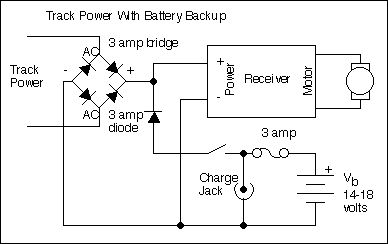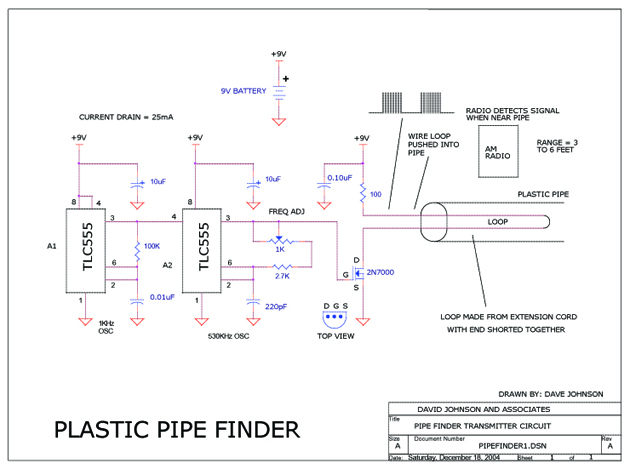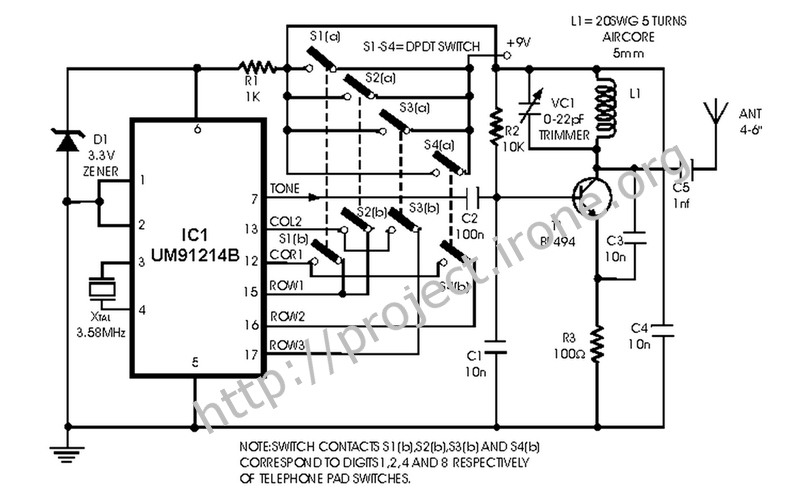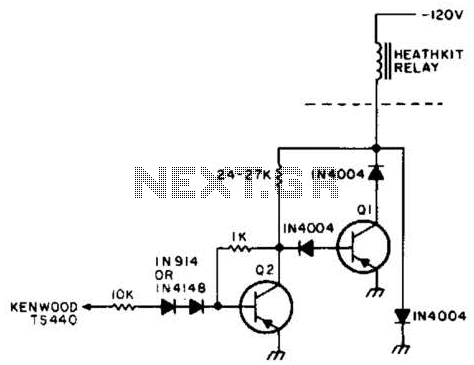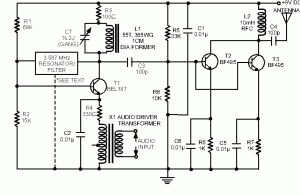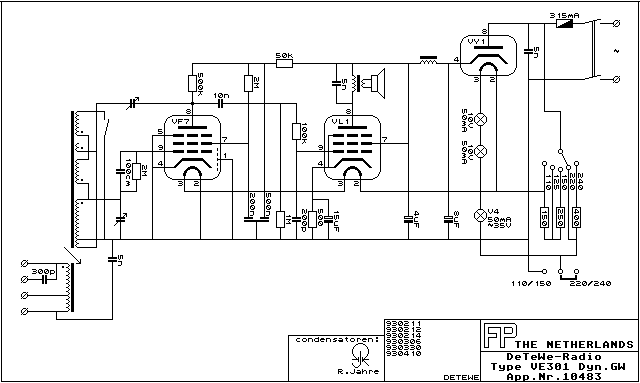
Canine Radio Direction Finder

The basic concept involves a transmitter that emits beeps while the user adjusts a directional antenna to determine the maximum signal strength, indicating the direction of the transmitter. The effectiveness of this method is limited due to the antenna's high sensitivity; when the transmitter is in close proximity, it becomes challenging to ascertain the correct direction. This technique is most effective within a specific range, approximately 30 to 100 yards, where the signal is weak enough to discern directional differences without being too far to receive any signal. The system comprises an audio amplifier that boosts the signal from the RF module, which is part of the transmitter setup. It is crucial to use an AM module that corresponds to the transmitter's frequency. The directional antenna is constructed from a wooden base with lengths of retractable steel ruler attached. This design was inspired by a post on an Australian forum, which is now unavailable. Although the results were somewhat disappointing, the entire project was low-cost, around 20 USD, and provided an entertaining experience, particularly when exploring the neighborhood while wearing headphones and handling what resembles a homemade TV antenna. In such situations, adopting a carefree demeanor may prevent unwanted attention from others.
The described circuit operates on the principle of signal direction finding using a directional antenna and an RF module. The transmitter emits signals at a specific frequency, which the RF module is tuned to receive. The audio amplifier is employed to enhance the received signal, making it audible through headphones. The directional antenna, crafted from wood and retractable steel rulers, functions by focusing the antenna's sensitivity in a particular direction. This design allows the user to rotate the antenna until the maximum audio signal is detected, indicating the transmitter's location.
To optimize performance, careful attention must be given to the construction of the directional antenna. The length and arrangement of the steel rulers can be adjusted to fine-tune the antenna's directivity and gain, which can significantly impact its ability to detect signals at varying distances. Additionally, the choice of RF module is critical; it must be compatible with the transmitter's frequency to ensure effective communication.
The limitations of the system, particularly concerning proximity and sensitivity, highlight the importance of understanding the operational range. Users should be aware that while the system can be effective within the specified distance, its performance may degrade in environments with high levels of interference or when the transmitter is too close.
Overall, this project presents an engaging opportunity to explore basic principles of radio frequency communication and signal detection, while also encouraging creativity in antenna design and construction.The basic idea is that the transmitter sends beeps and you turn the directional antenna until you get maximum signal and that is the direction of the transmitter. It doesn`t work terribly well. The reason being the antenna is quite sensitive, so even though it is directional, if the transmitter is close then you cant tell which way it is.
So it only works in the sweet spot where the transmitter is far enough away for the signal to be smaller when the the antenna is pointing the wrong way but not so far away that you cannot get a signal at all. For us, this range was perhaps 30 to 100 yards. Its just an audio amplifier that amplifies the signal from the RF module. The module is the other half of the transmitter module and something like this. Make sure you get an AM module - that matches the frequency of the transmitter. The directional antenn is made from a piece of wood, with lengths of retractable steel ruler attached to it.
The design was taken from a posting on an Australian forum that I now cannot find. But I`m sure they wouldn`t mind my repeating it here. As I mentioned the results were a littledisappointing. But then the whole project cost about 20 USD and we had some fun. Especially wandering around the neighbourhood wearing headphones andclutchingwhat looks like a home made TV antenna. This is the kind of situation where it is best to just to cultivate a wild look in the eye and hope people don`t bother you or call the police.
🔗 External reference
The described circuit operates on the principle of signal direction finding using a directional antenna and an RF module. The transmitter emits signals at a specific frequency, which the RF module is tuned to receive. The audio amplifier is employed to enhance the received signal, making it audible through headphones. The directional antenna, crafted from wood and retractable steel rulers, functions by focusing the antenna's sensitivity in a particular direction. This design allows the user to rotate the antenna until the maximum audio signal is detected, indicating the transmitter's location.
To optimize performance, careful attention must be given to the construction of the directional antenna. The length and arrangement of the steel rulers can be adjusted to fine-tune the antenna's directivity and gain, which can significantly impact its ability to detect signals at varying distances. Additionally, the choice of RF module is critical; it must be compatible with the transmitter's frequency to ensure effective communication.
The limitations of the system, particularly concerning proximity and sensitivity, highlight the importance of understanding the operational range. Users should be aware that while the system can be effective within the specified distance, its performance may degrade in environments with high levels of interference or when the transmitter is too close.
Overall, this project presents an engaging opportunity to explore basic principles of radio frequency communication and signal detection, while also encouraging creativity in antenna design and construction.The basic idea is that the transmitter sends beeps and you turn the directional antenna until you get maximum signal and that is the direction of the transmitter. It doesn`t work terribly well. The reason being the antenna is quite sensitive, so even though it is directional, if the transmitter is close then you cant tell which way it is.
So it only works in the sweet spot where the transmitter is far enough away for the signal to be smaller when the the antenna is pointing the wrong way but not so far away that you cannot get a signal at all. For us, this range was perhaps 30 to 100 yards. Its just an audio amplifier that amplifies the signal from the RF module. The module is the other half of the transmitter module and something like this. Make sure you get an AM module - that matches the frequency of the transmitter. The directional antenn is made from a piece of wood, with lengths of retractable steel ruler attached to it.
The design was taken from a posting on an Australian forum that I now cannot find. But I`m sure they wouldn`t mind my repeating it here. As I mentioned the results were a littledisappointing. But then the whole project cost about 20 USD and we had some fun. Especially wandering around the neighbourhood wearing headphones andclutchingwhat looks like a home made TV antenna. This is the kind of situation where it is best to just to cultivate a wild look in the eye and hope people don`t bother you or call the police.
🔗 External reference
